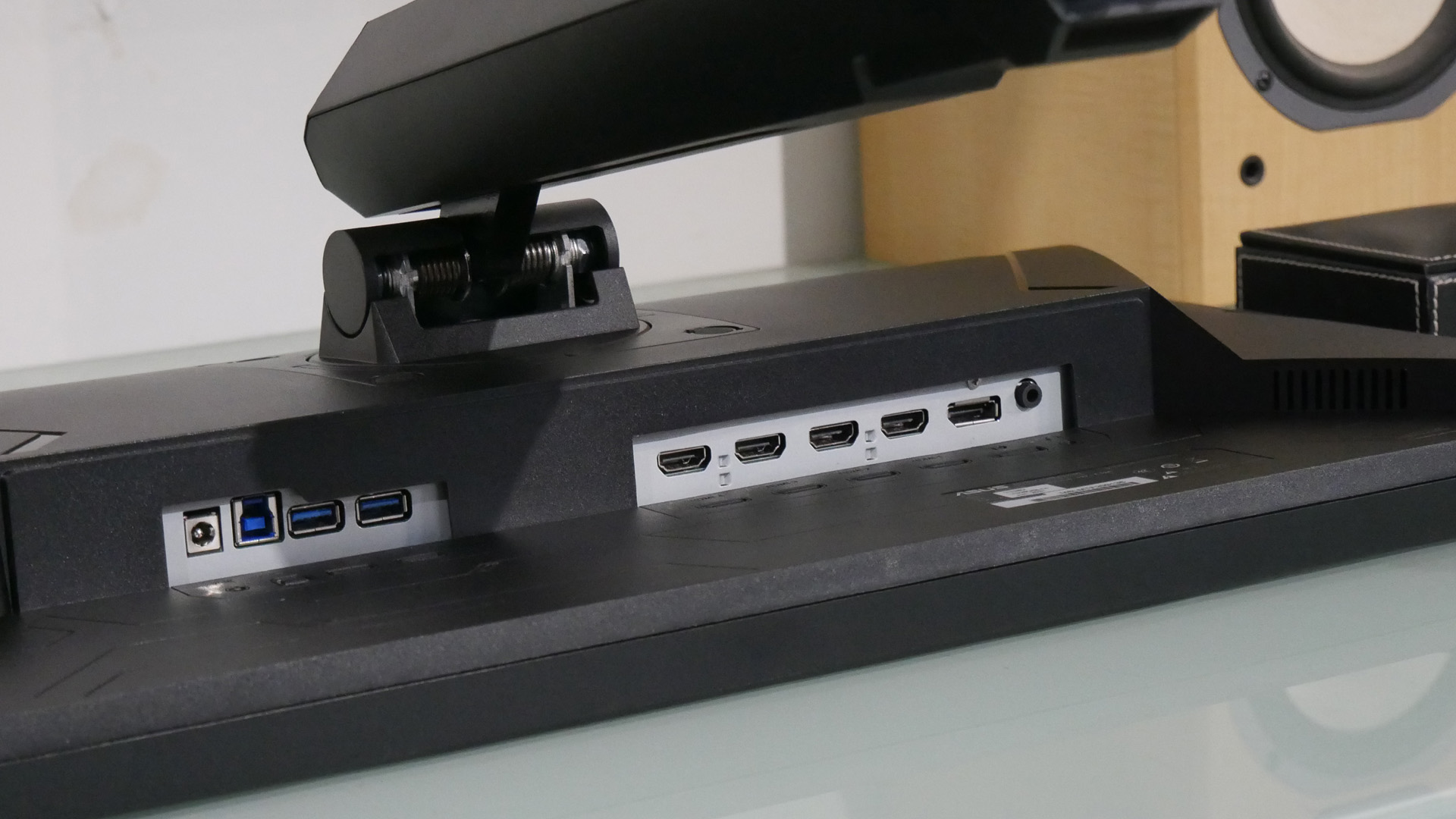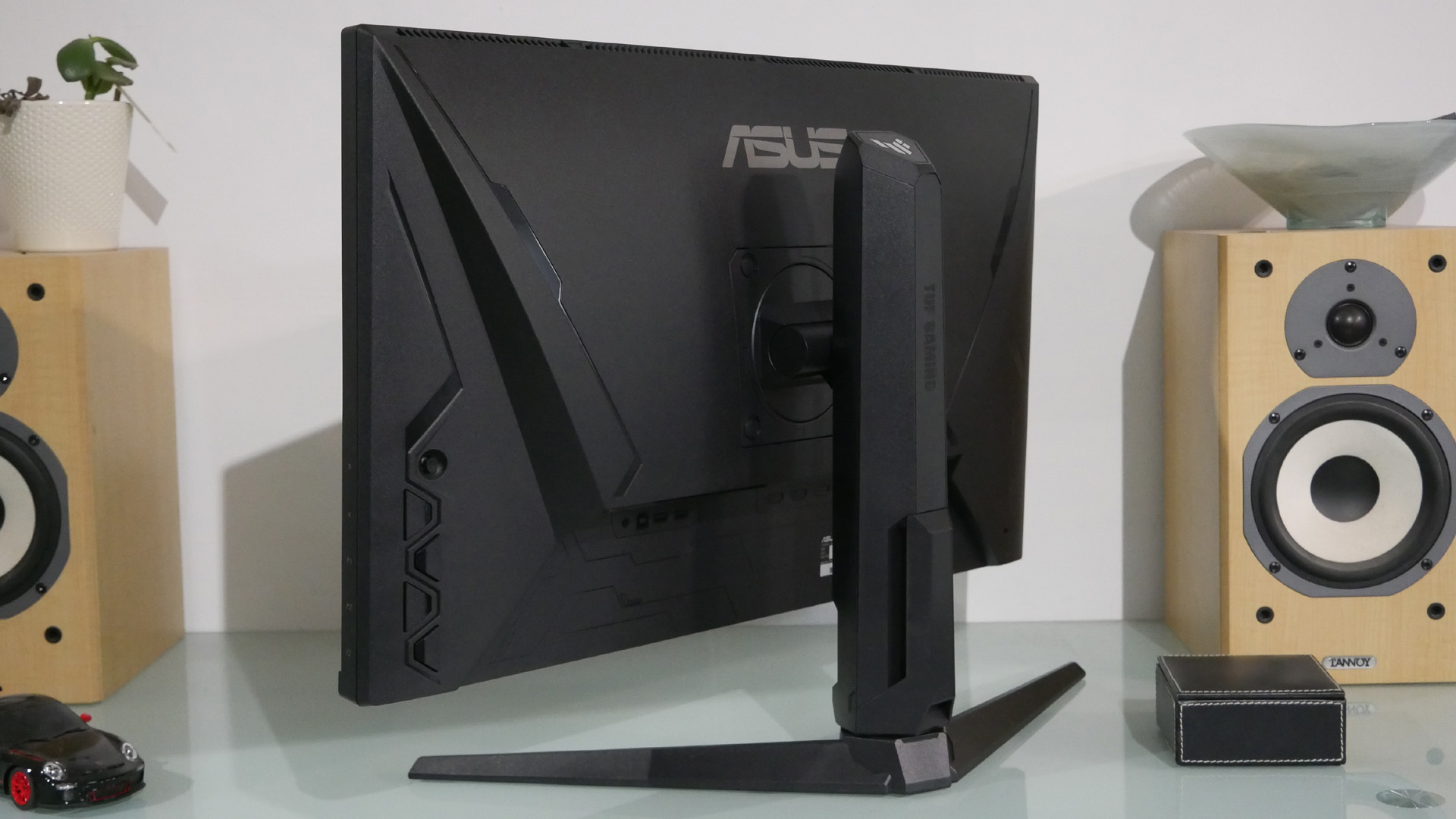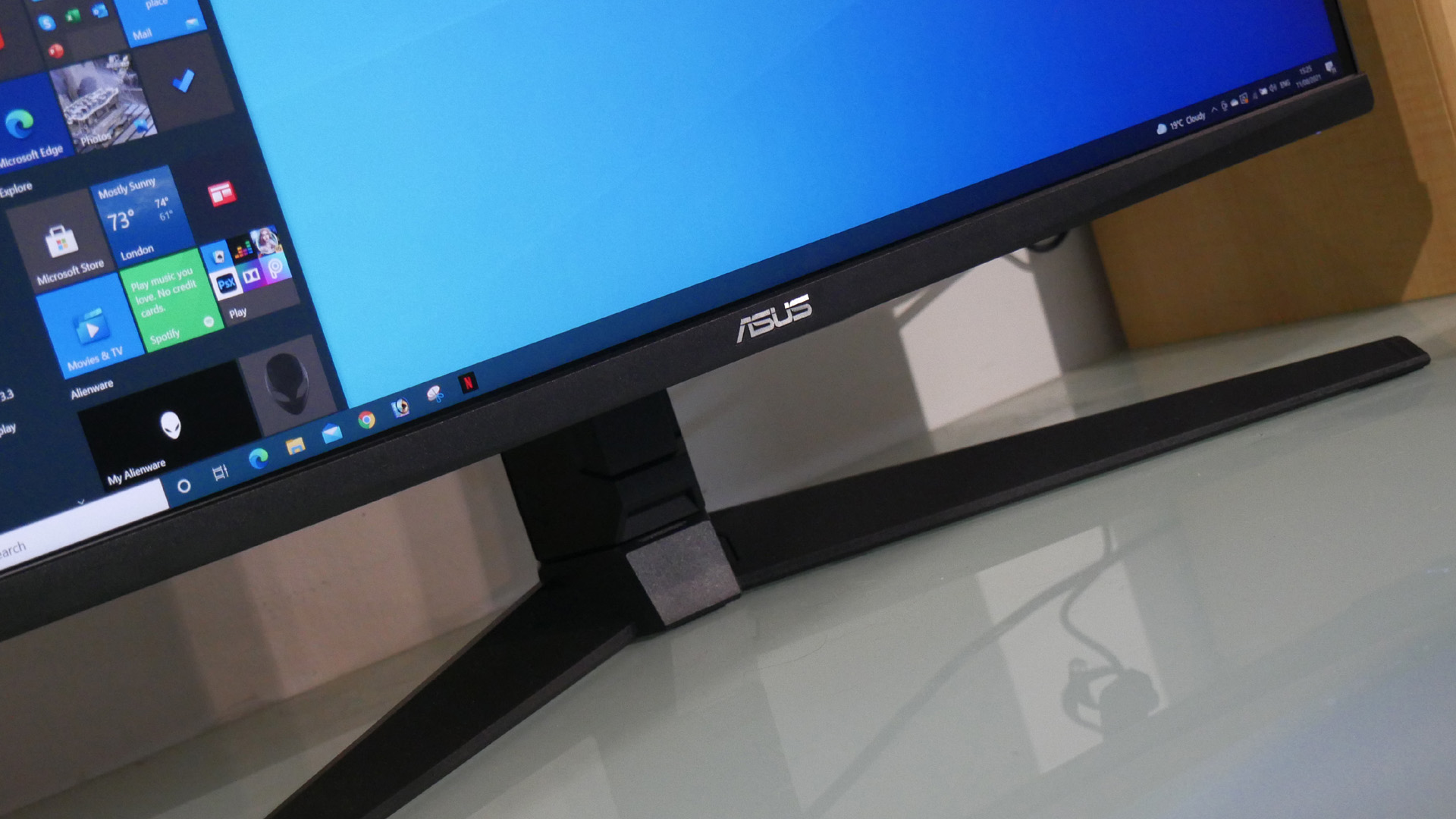GamesRadar+ Verdict
If you must have 4K, this is a great cross-platform display
Pros
- +
Nice all-round IPS image quality
- +
Speedy 144Hz and 1ms combo
- +
HDMI 2.1 for full console support
Cons
- -
Not a true HDR monitor
- -
Looks expensive for console gaming
Why you can trust GamesRadar+
Being all things to all gamers is a pretty tall order for a gaming monitor. But, on paper at least, the new Asus TUF Gaming VG28UQL1A looks like it might just pull it off. A contender for the best gaming monitor though? Let's find out.
It’s a full 4K 28-inch model with a quality IPS panel running at 144Hz, claimed 1ms pixel response and HDR certification. All very, very nice. But the real kicker, the thing that makes the TUF Gaming a bit different, is HDMI 2.1 support. In other words, it’s ready for both cutting-edge PCs and next-gen console gaming.

Design & Features
The Asus TUF Gaming VG28UQL1A is a little unusual in being a 28-inch rather than 27-inch model. So far, most 4K IPS high-refresh monitors have packed 27-inch panels. It’s not a huge difference, but console gamers will probably welcome the slightly larger proportions. At the same time, it’s not so big a jump that pixel density is tangibly impacted, as it is on 4K monitors measuring 40 inches or more.
Anyway, the main attraction here is the combination of that IPS panel tech and 4K resolution of 3,840 by 2,160 pixel resolution with 144Hz refresh. That full 144Hz is only achievable over DisplayPort hooked up to a PC. But the VG28UQL1A will do 4K at 120Hz over its swanky HDMI 2.1 interface (actually there are two HDMI 2.1 ports and a further pair of HDMI 2.0 connectors) when connected to either a Sony PS5 or Microsoft Xbox Series X (the series S will play 4K media like movies, but upscales games to 4K). As a PS5 monitor or Xbox Series X monitor, it's certainly one to consider.
Long story short, the Asus TUF Gaming VG28UQL1A is one of the long-awaited new generation of 4K monitors that’s ready for both PC and console high refresh gaming. That said, it’s worth noting that while there is a two-port USB 3.0 hub, there’s no USB Type-C connectivity. Arguably, that’s not a major oversight given the gaming remit. But for hooking up a laptop, a single cable USB-C solution is certainly very sweet - and is a noticeable absence or downside with this monitor.

More important is speed, something Asus definitely hasn’t overlooked. Along with the 144Hz refresh, Asus rates this monitor at 1ms grey-to-grey, which is about as good as IPS monitors currently get. Both Nvidia G-Sync and AMD FreeSync adaptive refresh are also supported and you get the usual suite of Asus speed-relevant extras including ELMB or Extreme Motion Blur Sync technology. It is all very promising and could see it land a slot on our best G-Sync compatible FreeSync monitors guide.
As for HDR support, the Asus TUF Gaming VG28UQL1A falls into the entry-level category thanks to VESA DisplayHDR 400 certification. It does have local dimming, but only eight edge-lit vertical zones. It's a distinctly rudimentary setup with limited actual HDR performance, but this monitor will at least render colors from an HDR input signal correctly.
As a model from Asus’s TUF line of gaming peripherals, this monitor lacks some of the snazzier styling elements of the top-end ROG family. It’s a little bit plasticky and anonymous-looking as a result. But the stand is fully adjustable including rotation into portrait mode, so we’re not really complaining.

Performance
In basic image quality terms, this is a very nice, vibrant IPS panel. Asus rates it at 350 nits SDR brightness and 450 nits in HDR mode, and it feels good for those kinds of figures. As IPS monitors go, the contrast is also good and there’s little by way of IPS glow, a problem that can blight even quite pricey IPS monitors. Good.
Of course, the 4K pixel grid makes for insane levels of detail and sharpness. This panel makes a 1080p monitor seem like it’s covered in a film of blurry glaze. Pixel response is another really strong attribute. Asus has included five levels of user-configurable overdrive in the TUF’s OSD menu. There’s some pretty obvious and ugly overshoot in the top two settings. But levels two and three offer really sharp responses without any visual nasties. OK, for the ultimate in low latency for online shooters and battle royale action, you’re going to want a 240Hz or 360Hz monitor. But this is still a properly quick panel.
What it’s not, however, is a true HDR monitor. Yes, graphics fests like CyberPunk and Forza Horizon, which look incredible in either mode thanks to that 4K pixel density, are that little bit punchier in HDR mode than SDR. But only marginally. That said, SDR content is handled well in HDR mode, so you could choose to run this monitor in HDR mode all the time and save switching for HDR games or video.

Overall - should you buy it?
It’s all good, then, this new Asus monitor? That’s an affirmative, mostly. But is it the ultimate in cross-platform gaming displays? Maybe, maybe not. The problem here, if there is one, is inherent to this kind of display. How, exactly, are you going to drive it at 4K and high refresh rates? Yes, the latest consoles support 4K at 120Hz. But how often a cutting-edge game is really going to render at 4K and anything like 120fps on a console is another matter.
On PC, high frame rates are achievable at 4K, making this a genuine contender for best 4K monitor for gaming. But only with megabucks graphics hardware that is hard to source and costs more than this monitor itself. To make the most of 4K and 144Hz on PC, you’ll need one of the best graphics cards costing well north of $1,000 / £1,000. Meanwhile, for console gamers, it’s hard to ignore the fact that some of the best 120Hz 4K TVs and best OLED TVs can now be had for not all that much more cash. You’d have to be very keen on a smaller display to choose this monitor over something like that for console gaming. You really would.
A serious dissertation on the finer points of input lag and overshoot followed by a forensic examination of AI-accelerated temporal upscaling. Such is a routine day in the working life of long-time tech wordsmith, Jeremy Laird. Along with GamesRadar, Jeremy’s 15-year back catalogue includes a host of tech and gaming outlets, including TechRadar and PC Gamer, not to mention contributions to mainstream media from the Independent to the Evening Standard. Complimenting Jeremy’s debilitating addiction to all kinds of digital hardware, he is also afflicted by an obsession with and a significant occupational sideline in cars and automotive technology.





